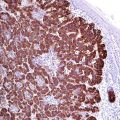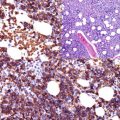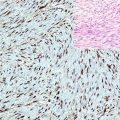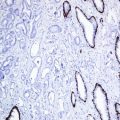, Hans Guski2 and Glen Kristiansen3
(1)
Carl-Thiem-Klinikum, Institut für Pathologie, Cottbus, Germany
(2)
Vivantes Klinikum Neukölln, Institut für Pathologie, Berlin, Germany
(3)
Universität Bonn, UKB, Institut für Pathologie, Bonn, Germany
Diagnostic Antibody Panel for Osseous and Cartilaginous Tumors
Osteocalcin:
Osteocalcin is a non-collagenous calcium-binding protein synthesized by osteoblasts involved in the mineralization of bone tissue and dentin. It is expressed by osteoblasts in the bone and dentin. Osteocalcin is a specific marker for bone and osteogenic tumors.
Osteonectin | ||
|---|---|---|
Expression pattern: cytoplasmic | ||
Main diagnostic use | Expression in other tumors | Expression in normal cells |
Bone tumors | Sarcomatoid renal cell carcinoma, cartilaginous tumors | Osteocytes, fibroblasts, endothelium, subset of epithelial cells |
Positive control: bone tissue | ||
Diagnostic Approach
Osteonectin is a calcium-binding bone matrix glycoprotein involved in the early mineralization steps of bone tissue. It is highly expressed in activated osteocytes. It is also expressed to a lesser degree in other cell types such as fibroblasts, endothelial cells, chondrocytes, and some epithelial types; consequently, osteonectin has a high sensitivity but low specificity for bone tissue and bone tumors and must be a part of antibody panel.
Stay updated, free articles. Join our Telegram channel

Full access? Get Clinical Tree








